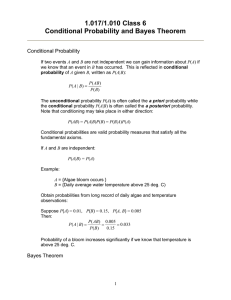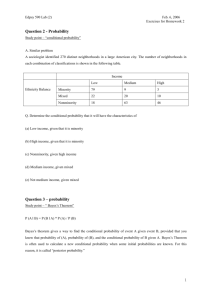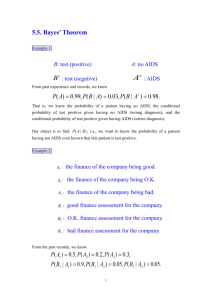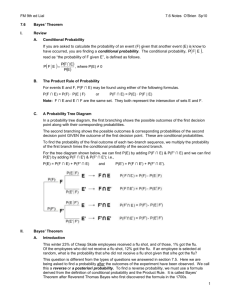MAE 108 Probability and Statistical Methods for Engineers
advertisement
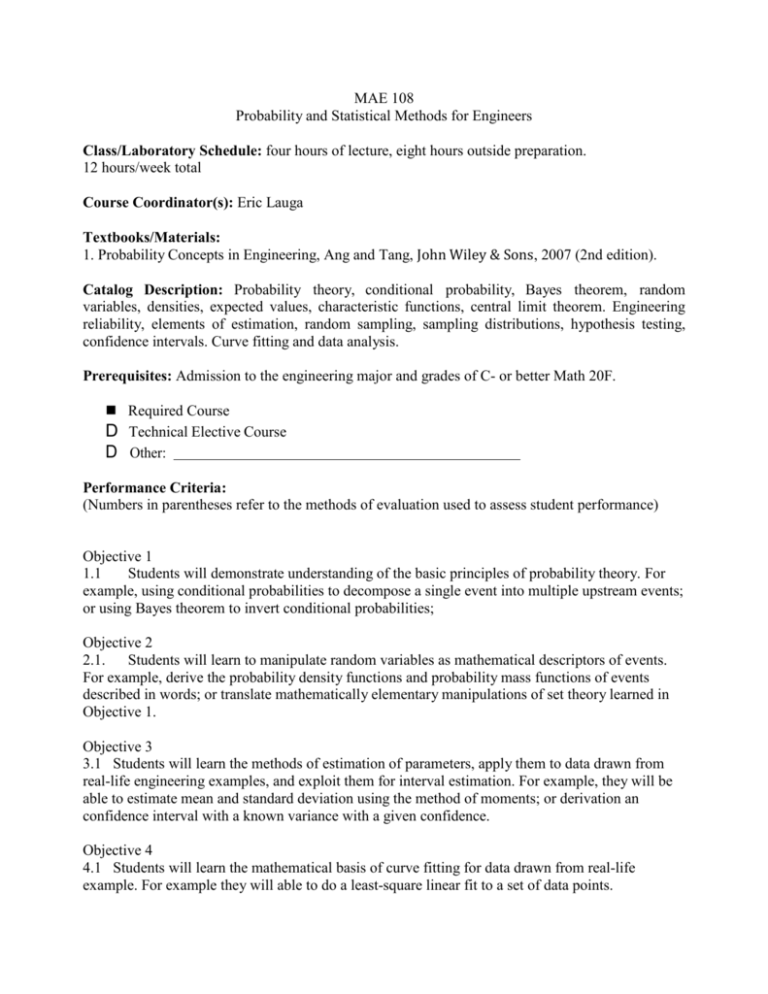
MAE 108 Probability and Statistical Methods for Engineers Class/Laboratory Schedule: four hours of lecture, eight hours outside preparation. 12 hours/week total Course Coordinator(s): Eric Lauga Textbooks/Materials: 1. Probability Concepts in Engineering, Ang and Tang, John Wiley & Sons, 2007 (2nd edition). Catalog Description: Probability theory, conditional probability, Bayes theorem, random variables, densities, expected values, characteristic functions, central limit theorem. Engineering reliability, elements of estimation, random sampling, sampling distributions, hypothesis testing, confidence intervals. Curve fitting and data analysis. Prerequisites: Admission to the engineering major and grades of C- or better Math 20F. Required Course D Technical Elective Course D Other: Performance Criteria: (Numbers in parentheses refer to the methods of evaluation used to assess student performance) Objective 1 1.1 Students will demonstrate understanding of the basic principles of probability theory. For example, using conditional probabilities to decompose a single event into multiple upstream events; or using Bayes theorem to invert conditional probabilities; Objective 2 2.1. Students will learn to manipulate random variables as mathematical descriptors of events. For example, derive the probability density functions and probability mass functions of events described in words; or translate mathematically elementary manipulations of set theory learned in Objective 1. Objective 3 3.1 Students will learn the methods of estimation of parameters, apply them to data drawn from real-life engineering examples, and exploit them for interval estimation. For example, they will be able to estimate mean and standard deviation using the method of moments; or derivation an confidence interval with a known variance with a given confidence. Objective 4 4.1 Students will learn the mathematical basis of curve fitting for data drawn from real-life example. For example they will able to do a least-square linear fit to a set of data points. Course Objectives: (Numbers in parenthesis refer to MAE and AE Program Outcomes) Objective 1: To teach students the mathematical basis to quantify uncertainties in problems in engineering. (1a, 5e, 8h) Objective 2: To enable students to formulate and solve engineering problems which are not deterministic but instead have to be addressed using probabilistic and statistical tools (5e, 8h) Objective 3: To demonstrate the application of probability and statistics to the analysis of real-life engineering data (1a, 5e, 11k, ME13) Course Topics: 1. Introduction to probability theory, conditional probability, and Bayes theorem; 2. Random variables, continuous vs. discrete, expected values, central limit theorem; 3. Elements of estimation, random sampling, sampling distributions; 4. Hypothesis testing and confidence intervals; 5. Curve fitting and data analysis. Prepared by: E. Lauga, January 2013 Reviewed: ?




